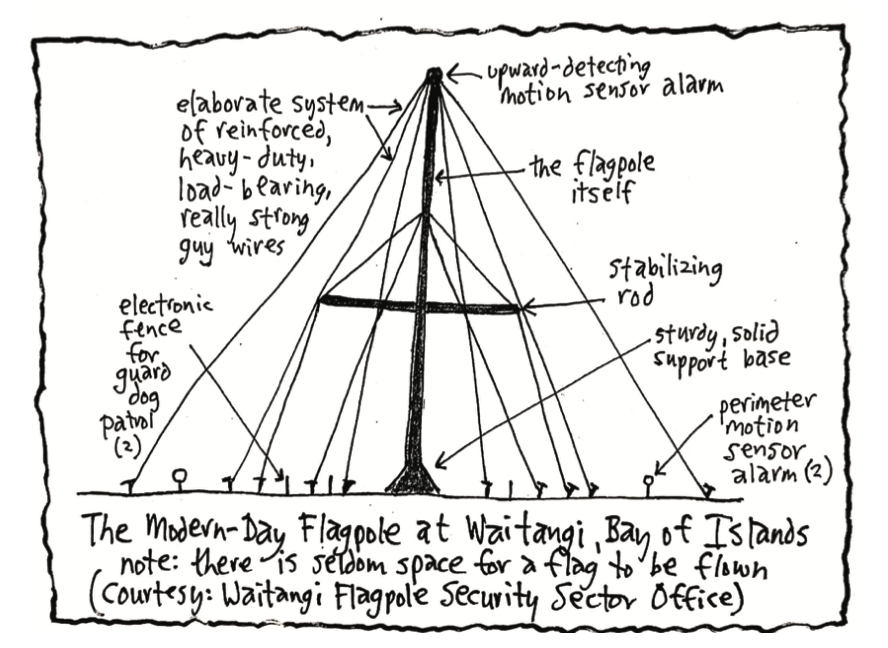You can purchase Nieuw Zeeland An English-Speaking Polynesian Country With A Dutch Name: A Humorous History of New Zealand by Geoffrey Corfield from Amazon today.

Peace comes (for the time being). ”This is the end of mine to you. It is finished, ” Hone Heke takes to “fire-water” and dies in 1850. A new flagpole is erected at Russell in 1857 by representatives of the seven tribes who fought against the British in The Flagpole War.
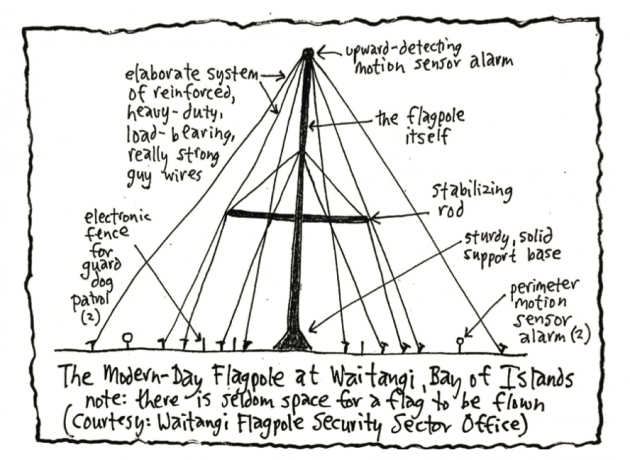
Wellington 1846
As the Wellington area is not very good for agriculture, settlers go inland and start raising sheep. Sheep save Wellington. But Te Rauparaha appears again and leads armed resistance against the surveying of land here too. The British build a fort at Porirua, attack the nearby Maori fortress at Pauatahanui and capture Te Rauparaha who complains that if they’d wanted to capture him “notice must be sent beforehand”, and later objects to being imprisoned with “an inferior captive” (the “inferior captive” is released). The Maori retreat north to Paekakariki and are attacked again at Horokiri. Peace comes (for the time being). Te Rauparaha is released and dies in 1849.
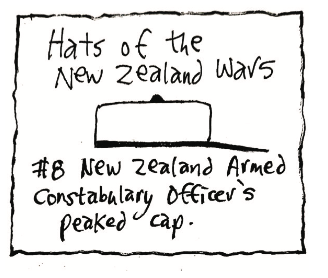
Wanganui 1847
The New Zealand Company buys land at Wanganui from the local coastal Maori for pipes, mirrors, blankets, tobacco and mouth harps (“700 naked savages were twisted and entangled in the mass over the line of goods” 1840). The Maori then trade pigs and potatoes for more goods; and the British trade blankets, pipes and tobacco for more pigs and potatoes. Wanganui’s first economy is based on pigs and potatoes.
In 1847 Wanganui is attacked by 400 inland Maori, but is successfully defended by 170 British and 230 coastal Maori. Peace comes (for the time being).
THE RELATIVELY CALM PERIOD 1847-1860
After The First Round of the British-Maori Wars, there is a Relatively Calm Period before The Second Round of the British-Maori Wars begins. During this time “abundance prevails everywhere”.
Of course on the South Island they had no British-Maori Wars, other than that one initial incident at Tuamarina (docking berths available), which was never repeated; and so they had relative calm and abundance prevailing everywhere as a normal state of affairs, and thought nothing of it.
The South Island also had the two other main colonial settlements to be founded in New Zealand, both of which were joint efforts by The New Zealand Company and churches and both of which progressed relatively calmly and abundantly as well.
Dunedin 1848
First settled by 344 Scottish “Free Kirk” Presbyterians, Dunedin was located on Otago Harbour because The New Zealand Company surveyor thought it “an ornamental and commodious site for a town”. It turned out, however, to be “a town pitched upon a mass of hills with steep gullies between them that nothing save an earthquake coming to level them could ever make it suitable for the site of a town”.
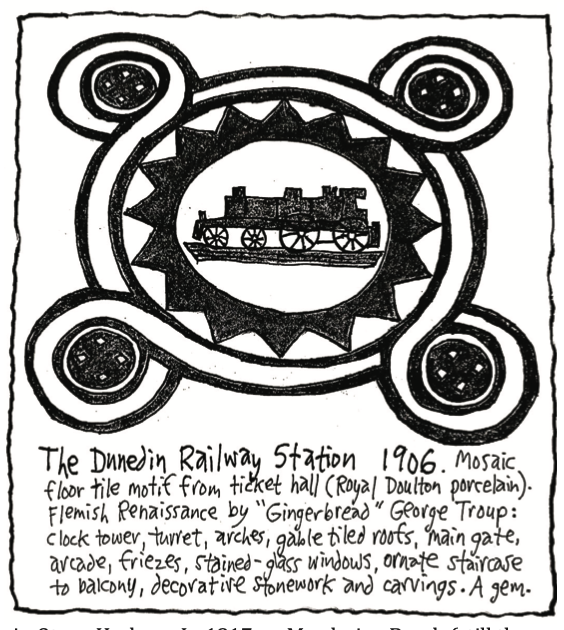
The first spot chosen for a townsite, which could have been anywhere between the Banks Peninsula and Milford Sound, was actually at Port Chalmers at the mouth of the harbour (31 July 1844).
The first name for Dunedin was not actually Dunedin either, but “New Edinburgh”. It was changed to Dunedin at the suggestion of the Provost of Edinburgh who complained that “the ‘News’ (towns named New Something) in North America are an utter abomination” (forgetting that “New” Edinburgh was to be in “New” Zealand).
The name Dunedin comes from either the old Gaelic name for Edinburgh (“The Garden of Edin on a Dunghill”), or from a combination of the “Dun” from Dundee and the “Edin” from Edinburgh. Whichever it is it started out Scottish.
The settlers paid for their land with cash; surveyed it to a plan drawn up in Scotland; built schools, a library and a distillery; and then found out that of the first 344 colonists only 15 had actually bought any land, by 1847 only 72 of the original 2,000 lots had been sold, and that half of all the property owners were not members of the Free Church at all, but followers of “the Little Enemy” (Anglicans).
And then sheep squatters arrive and take over the whole place and it doesn’t matter anymore. By 1849 the population is 1,044 and Dunedin goes on to become the first place on Earth to adopt the eight hour working day; and to conquer the hills and gullies by becoming the second place on Earth with a cablecar system (1879, San Francisco was first 1873, the builder of the Dunedin system also built the Melbourne system, cablecars ended in Dunedin in 1957).
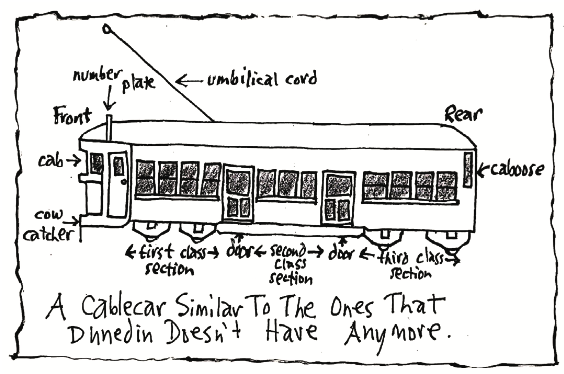
Although Dunedin was not involved in any of the British-Maori wars, it did have some gory incidents in a previously violent past. At one time three feuding Maori chiefs lived on the Otago Peninsula. One was killed, disembowelled and eaten; and another killed and his bones used for fish-hooks (a particularly humiliating fate). End of feud. In 1809 the crew of a sealing ship were all killed and eaten in Otago Harbour. In 1817 on Murdering Beach (still there and still with the same name, Otago is not so squeamish as to change Murderers’ Bay to Golden Bay), a trader in preserved heads and sealskins killed 70 Maori in retaliation for them killing four of his men. But other than that, things were relatively calm and abundant in Dunedin.
You can purchase Nieuw Zeeland An English-Speaking Polynesian Country With A Dutch Name: A Humorous History of New Zealand from Amazon today.

If you enjoyed this BFD article please consider sharing it with your friends.

